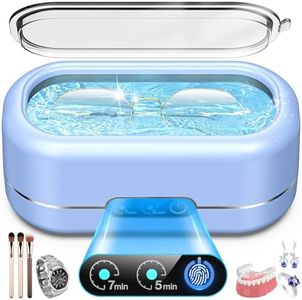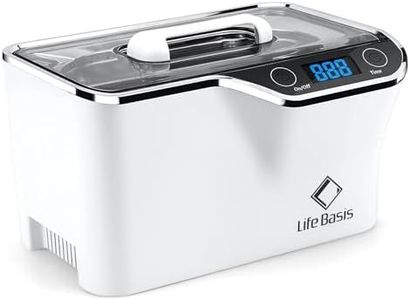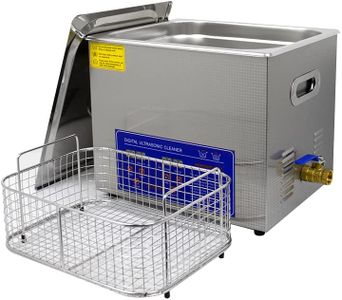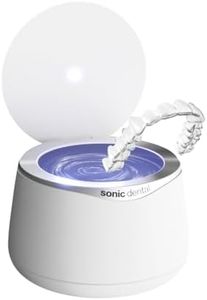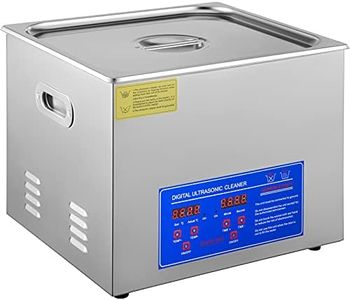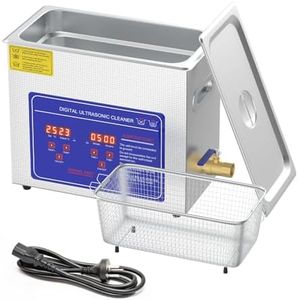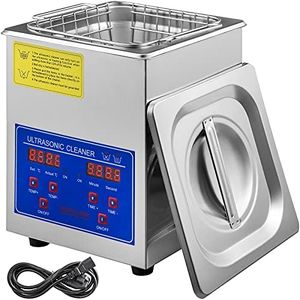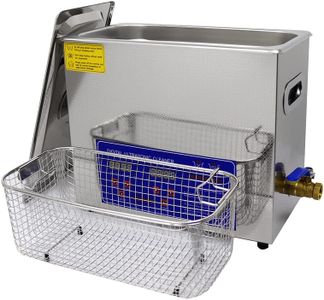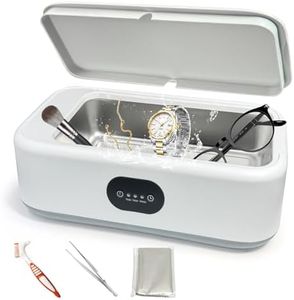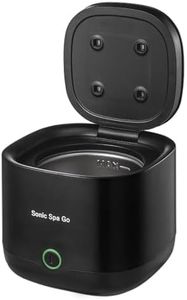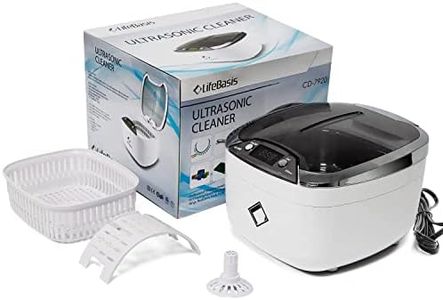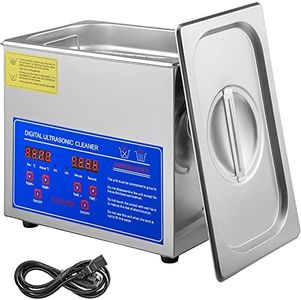We Use CookiesWe use cookies to enhance the security, performance,
functionality and for analytical and promotional activities. By continuing to browse this site you
are agreeing to our privacy policy
10 Best Budget Ultrasonic Cleaner
From leading brands and best sellers available on the web.Buying Guide for the Best Budget Ultrasonic Cleaner
Choosing an ultrasonic cleaner is all about matching the device's capabilities to what you want to clean most often. Ultrasonic cleaners use sound waves to gently but thoroughly clean items like jewelry, glasses, watches, tools, or small household items. When picking the right model, you need to think about how much space you need, how dirty the items usually are, and how quickly you want the cleaning job to be done. Look for a device that’s simple to use, safe for your items, and sized to fit what you plan to clean most frequently.Tank SizeThe size of the ultrasonic cleaner's tank determines how much and what size items you can clean at once. This spec is typically measured in liters or ounces, and it's important because trying to clean items too large or many pieces at once can lead to uneven results. Tanks up to about 0.5 liters are good for small, delicate things like rings or earbuds, while 0.5 to 2 liters handles eyeglasses, watches, and larger jewelry. Bigger tanks, ranging from 2 to over 10 liters, can accommodate tools, dental equipment, or small mechanical parts. Pick a size that comfortably fits your most frequently cleaned items without needing to overload or stack them.
Ultrasonic FrequencyUltrasonic frequency is measured in kilohertz (kHz) and tells you how fast the sound waves vibrate. This matters because different frequencies are better for different cleaning tasks. Lower frequencies (around 28–40 kHz) produce larger bubbles and more forceful cleaning, making them good for removing tough grime from durable items like metals. Higher frequencies (above 45 kHz) create smaller, gentler bubbles, which are better for fragile things like delicate jewelry, glasses, or electronic components. Choose a frequency that matches the typical dirtiness and delicacy of your items–lower for heavy-duty jobs, higher for gentle treatment.
Timer SettingsThe timer in an ultrasonic cleaner lets you set how long the cleaning cycle runs; this is important for controlling cleaning effectiveness and preventing damage from overexposure. Some devices offer only fixed cycles (like 3 or 5 minutes), while others let you adjust the time up to 20 minutes or more. Shorter cycles work well for light cleaning or delicate items, while tougher jobs may need longer durations. Try to pick a model that offers variable timing so you can match the cleaning cycle to the needs of each item.
Heating FunctionHeated ultrasonic cleaners warm the cleaning solution, which can make cleaning faster and more effective, especially for removing oils, grease, or stubborn dirt. Not all models have heating, but it’s a useful feature if you plan to clean items with tough residues or if you want to increase cleaning efficiency. For most delicate household items, unheated models work fine, but for tools or mechanical parts, consider a cleaner with adjustable heating.
Build Quality and Basket TypeThe materials used in the ultrasonic cleaner, especially the tank and basket, matter for durability and safety. Stainless steel tanks resist corrosion and are easy to clean; baskets help suspend items so they don’t scratch against the tank bottom. Mesh or plastic-coated baskets protect delicate items, while metal baskets are stronger for heavy tools. Think about how often you’ll use the cleaner and the types of things you’ll clean to decide what level of build quality you need—the more frequent or heavier the use, the more robust the construction should be.
